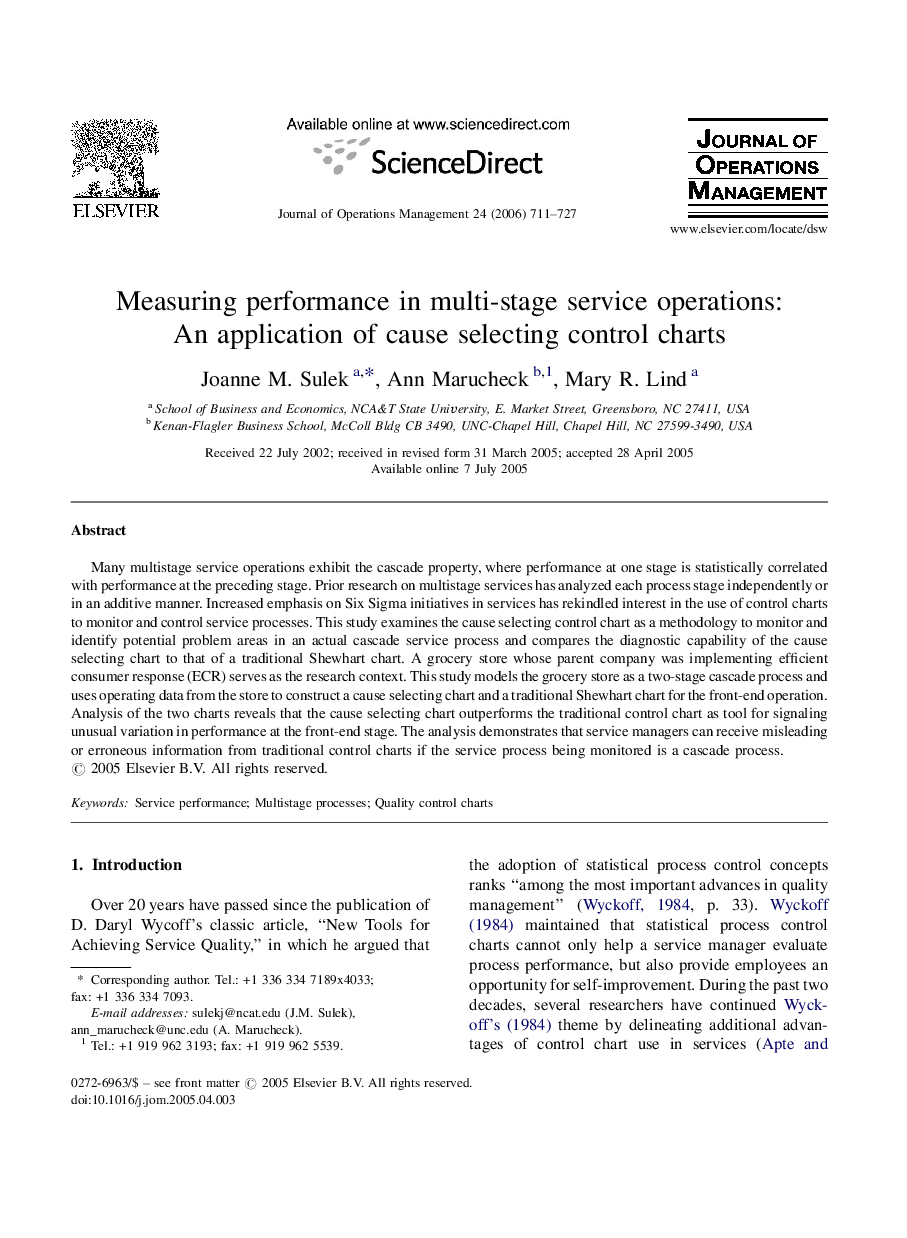| Article ID | Journal | Published Year | Pages | File Type |
|---|---|---|---|---|
| 1032127 | Journal of Operations Management | 2006 | 17 Pages |
Many multistage service operations exhibit the cascade property, where performance at one stage is statistically correlated with performance at the preceding stage. Prior research on multistage services has analyzed each process stage independently or in an additive manner. Increased emphasis on Six Sigma initiatives in services has rekindled interest in the use of control charts to monitor and control service processes. This study examines the cause selecting control chart as a methodology to monitor and identify potential problem areas in an actual cascade service process and compares the diagnostic capability of the cause selecting chart to that of a traditional Shewhart chart. A grocery store whose parent company was implementing efficient consumer response (ECR) serves as the research context. This study models the grocery store as a two-stage cascade process and uses operating data from the store to construct a cause selecting chart and a traditional Shewhart chart for the front-end operation. Analysis of the two charts reveals that the cause selecting chart outperforms the traditional control chart as tool for signaling unusual variation in performance at the front-end stage. The analysis demonstrates that service managers can receive misleading or erroneous information from traditional control charts if the service process being monitored is a cascade process.
